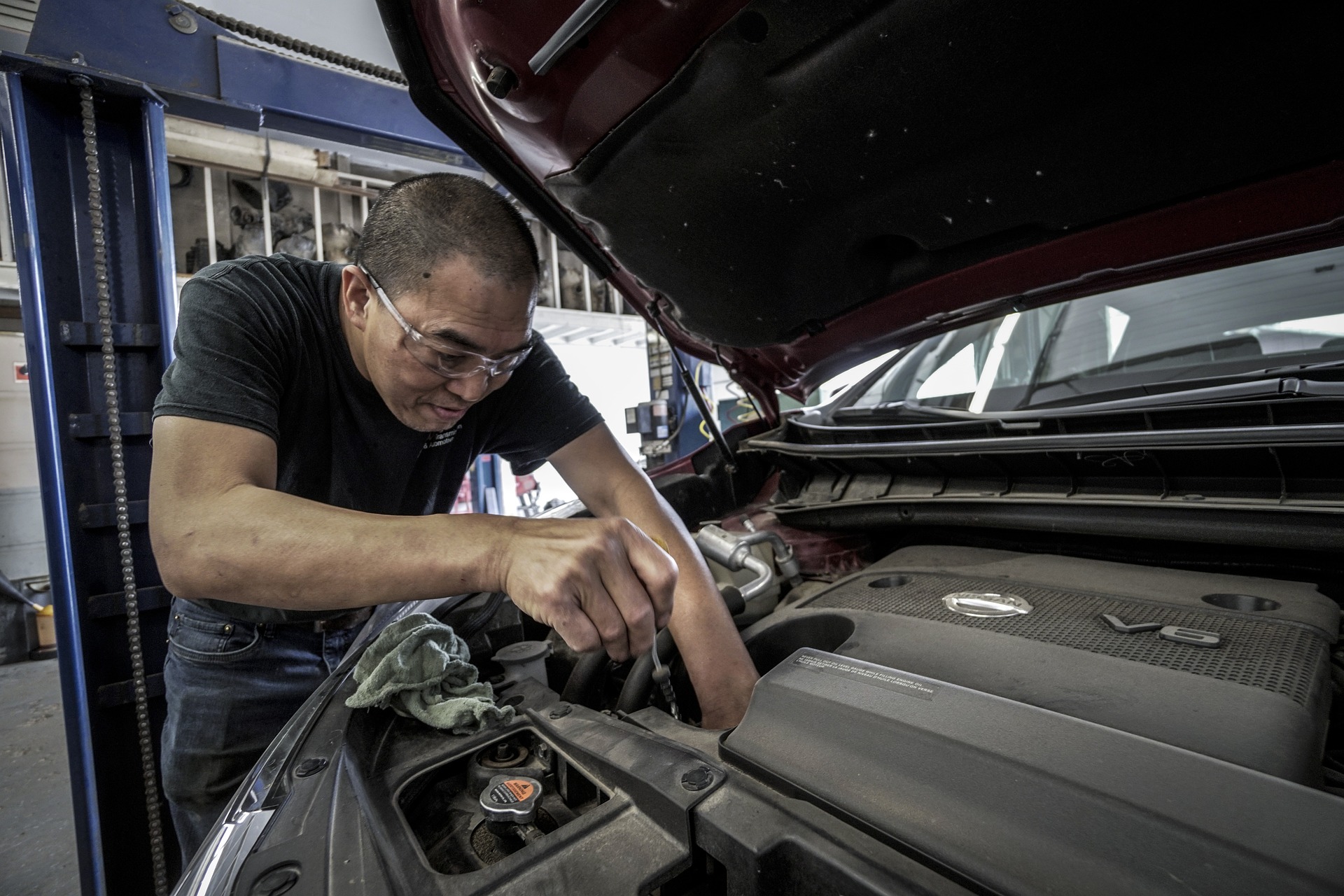Has your vehicle recently hit 100,000 kilometres or about 60,000 miles on the odometer? If so, it’s time for service with your local Vancouver, BC mechanic. Why is 100,000 kilometres so important? What can you expect at this appointment? Here’s what you need to know.

Image by Ryan Doka from Pixabay
Why 100,000 Km Is a Major Milestone
Think of your 100,000 kilometre service like you would going to the doctor for a checkup at age 40 or 50. You’re not a spring chicken anymore, and well, things are starting to malfunction.
With cars and trucks, this milestone usually occurs around the two-year mark. By then your car has had some good wear and tear, even if you’ve kept up with routine maintenance.
If you’re thinking of selling the vehicle or turning it in for a new lease, this is a key time. Depending on what turns up when your mechanic gets under the hood, you can budget accordingly.
100,000 Km Service Checklist
To start, your service at 100,000 kilometres should include all the things that your mechanic likely checked at 50,000 kilometres:
- Testing the integrity of the battery
- Changing engine oil
- Replacing spark plugs (or checking glow plug function in diesels)
- Replacing air and fuel filters
- Inspecting hoses and belts for wear
- Checking the suspension system
- Flushing and replacing power steering fluid
- Making sure the AC functions properly
- Examining the tired tread depth
But at 100,000 kilometres, your mechanic will add these tasks:
- Changing the water pump
- Changing the transmission fluid in an automatic vehicle
- Changing the oil in the differential for a four-wheel drive vehicle
- Inspecting the engine and gearbox for signs of wear
- Flushing the cooling system
- Replacing the timing belt
The timing belt is particularly important, as it coordinates the action of the camshaft and the crankshaft. If these get out of sync, it could cause extensive damage to the engine.
Your mechanic may also include other services, based on whether you’re due for some routine maintenance anyway or complaints you share about something not working or a weird sound. These include:
- Checking or changing brakes
- Topping off fluids
- Tracing leaks
- Inspecting the electrical and ignition systems
- Replacing wiper blades
- Performing wheel alignment or tire rotation
How Much Does a 100,000 Km Service Cost
You might be wondering what you can expect to pay for your Toyota 100,000 kilometre service or maybe a 100,000 km service on an Audi. It really depends on the make, model, age, and upkeep of the vehicle. You could start at about $400-800 and go up from there, based on what needs to be done.
The complexity of the engine and how easy it is to access various systems is another factor. Some vehicles have their batteries under the front passenger seat for example, not under the hood, which involves more labour in the shop simply to look at the battery or to replace it. Some vehicles use multiple belts, while others use one long serpentine belt to drive many elements.
If your car or truck inspection turns up a need for new belts, hoses, tires, or suspension components, you will need to pay for parts on top of labour. However, if you want to get the most out of your vehicle’s expected lifespan, this is a worthwhile investment. And even if you intend to sell it, you’ll want it to be in the best condition possible to get the highest price you can.
Best Ways to Care for a Vehicle Over 100,000 Km
Once your vehicle crosses the 100,000 kilometre mark, it’s going to need more care going forward.
If you love your truck or want to squeeze every last kilometre out of your sportscar, you should put together a maintenance plan with your mechanic. Here are some steps you should take to ensure your vehicle’s longevity:
- Stay current on oil changes and fluid top-offs at regular recommended intervals.
- Invest in lower-cost items, like spark plugs, filters, belts, and hoses that make a big difference in a vehicle’s overall performance and help preserve the engine.
- Keep an eye out for leaks and listen for noises that don’t sound right.
- Pay more attention to your tires, brakes, and suspension.
- Watch the battery and starting system for signs of wear. Most batteries last about three years, but they can become corroded faster by the salt air and moisture around Vancouver, BC.
- Keep the vehicle’s exterior surface in good condition, as it protects the rest of the car.
- Tend to small problems right away, rather than letting them morph into more expensive ones over time.
Your mechanic can help you decide if something needs fixing in the shop urgently or if it can wait until your next scheduled maintenance check.
